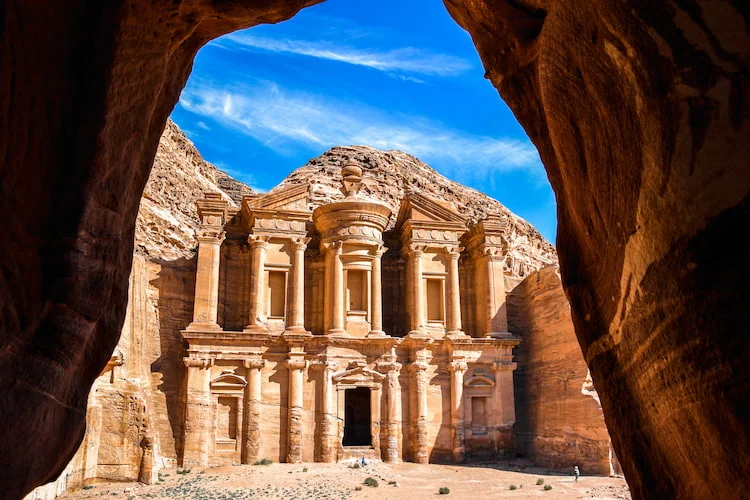Deep in the Jordanian desert, hidden among towering cliffs and rugged canyons, lies one of the most mesmerizing archaeological wonders of the world—Petra, Jordan. Known as the rose-red city due to the pink-hued sandstone from which it was carved, Petra continues to captivate travelers with its sheer size, historical significance, and breathtaking architecture.
Once a bustling hub of trade and culture, Petra was the capital of the Nabataean Kingdom, a mysterious civilization that flourished over 2,000 years ago. Today, Petra stands as a UNESCO World Heritage Site and one of the New Seven Wonders of the World, drawing millions of visitors from around the globe. With its dramatic canyons, rock-carved tombs, and sacred temples, Petra isn’t just a destination—it’s a journey back in time.
Whether you’re a history buff, adventure traveler, or culture enthusiast, this blog post will guide you through the incredible story of Petra, its top attractions, practical travel advice, and why it deserves a place on your travel bucket list.
The Fascinating History of Petra
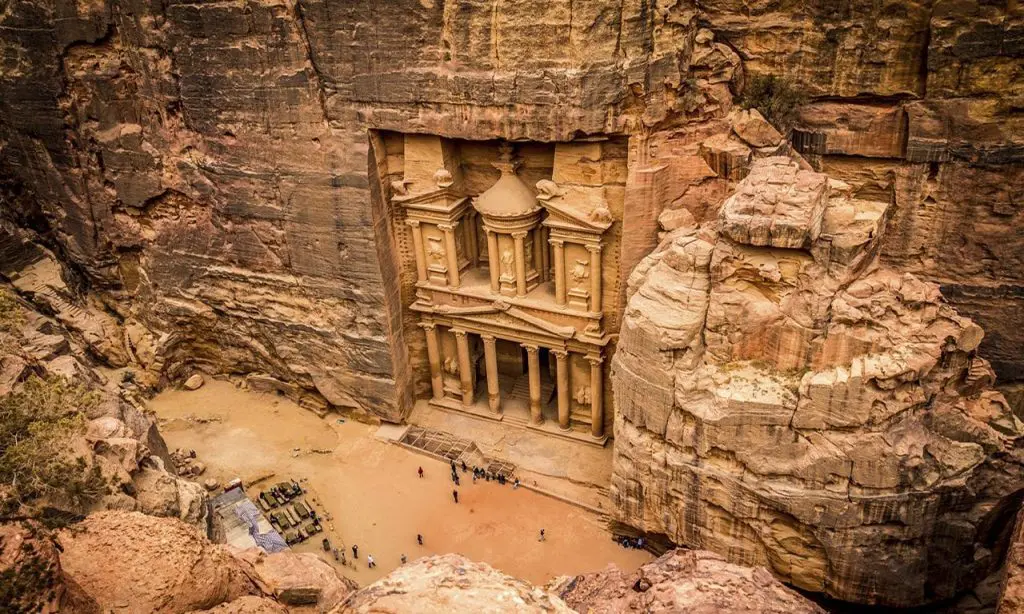
The origins of Petra, Jordan date back to the 4th or 5th century BCE, though it reached its peak during the 1st century CE under the Nabataeans, a nomadic Arab tribe who settled in the area. Their genius lay in transforming a remote, arid desert into a vibrant trading center by building complex systems of dams, cisterns, and aqueducts to harvest water.
Strategically located at the crossroads of ancient trade routes, Petra became a vital link between the Arabian Peninsula, Egypt, and the Mediterranean. Merchants carried incense, spices, silk, and ivory through Petra, making it a wealthy and influential city. The Nabataeans used their wealth to carve temples, homes, and tombs into the cliffs, blending Hellenistic and Mesopotamian architectural styles.
After being annexed by the Roman Empire in 106 CE, Petra began to decline. Earthquakes in the 4th and 6th centuries further devastated the city, and it eventually faded from prominence. By the Middle Ages, Petra was forgotten by the outside world until its rediscovery in 1812 by Swiss explorer Johann Ludwig Burckhardt. Since then, it has become a symbol of Jordanian heritage and archaeological excellence.
Must-See Attractions in Petra
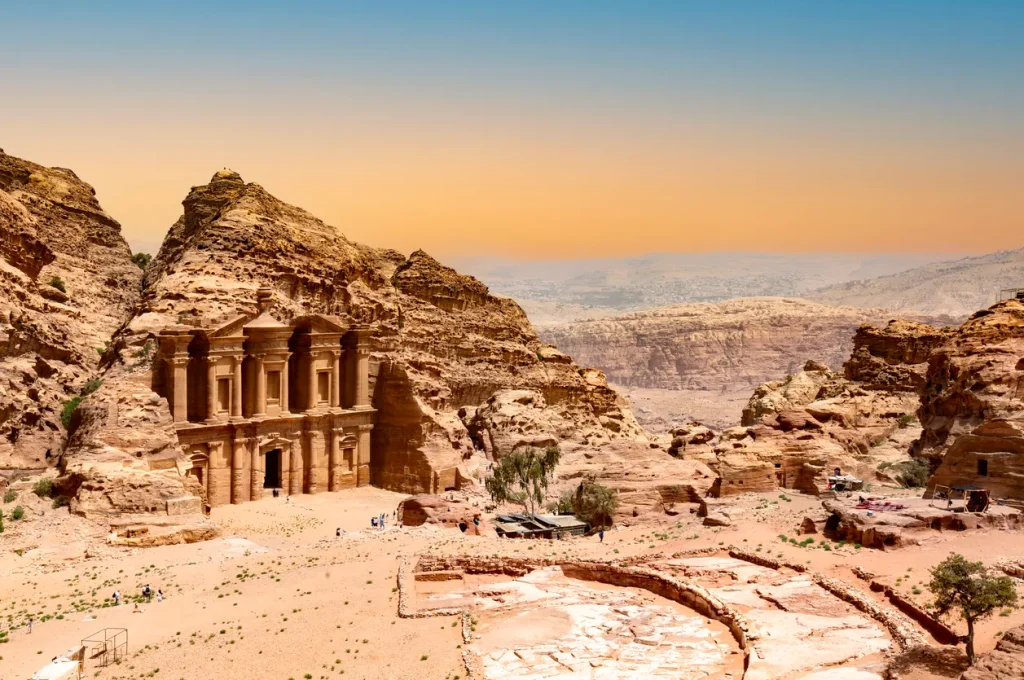
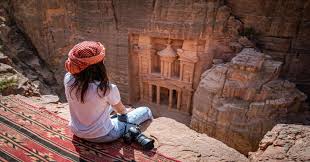
Petra is not just a single monument—it’s a vast city with hundreds of structures spread across a rugged landscape. To truly appreciate its splendor, set aside at least one full day (preferably two). Below are the top attractions you must explore:
The Siq: A Dramatic Entrance
The journey into Petra begins through the Siq, a natural sandstone gorge about 1.2 kilometers long and up to 80 meters high. As you walk along the winding path, you’ll spot ancient carvings, remnants of water channels, and niches that once held statues of gods and guardians.
The Siq sets the stage for the wonder that lies ahead. The play of sunlight on the red and gold canyon walls creates an almost surreal atmosphere. At the end of the Siq, you’ll catch your first breathtaking glimpse of the Treasury, making this walk one of the most memorable parts of the Petra experience. If you’re visiting at night, the Siq is lit by candlelight during Petra by Night, turning it into a magical corridor of flickering shadows and music.
Al-Khazneh (The Treasury)
Emerging from the Siq, the Treasury—or Al-Khazneh—rises dramatically before you. Standing 39 meters tall and carved with incredible precision, this iconic structure is Petra’s most photographed monument. Its façade is richly decorated with columns, friezes, and sculptures that blend Greco-Roman style with Nabataean elements.
Though originally believed to be a treasure vault, the Treasury was actually a royal tomb. Its name comes from a legend that pirates hid gold in the urn at the top. Visitors often spend time just sitting on the benches opposite the structure, taking in its grandeur.
The best time to visit is early morning or late afternoon, when sunlight strikes the façade just right. While you can’t go inside, the view from the outside is unforgettable and offers the perfect photo opportunity.
The Street of Facades and Royal Tombs
As you continue past the Treasury, you’ll enter the Street of Facades, a row of elaborate tombs carved into the sandstone cliffs. These tombs once belonged to Nabataean elites and showcase the architectural diversity of Petra, with each facade featuring unique designs and rock textures.
Climb the stairs to reach the Royal Tombs, a cluster of massive mausoleums including the Urn Tomb, Silk Tomb, and Palace Tomb. The Urn Tomb is particularly impressive with its large interior and colonnaded terrace, while the Silk Tomb glows in shades of red, orange, and white due to the swirling colors in the rock.
These tombs provide a deeper understanding of the Nabataean culture and are less crowded than the Treasury, allowing for a more peaceful exploration.
The Monastery (Ad Deir)
Arguably just as impressive as the Treasury, the Monastery, or Ad Deir, is a monumental structure located at the top of a steep climb of over 800 steps. The journey takes about 45 minutes to an hour and is not for the faint-hearted—but the reward is worth every step.
The Monastery is massive—larger than the Treasury—and its remote location gives it a mystical aura. It was likely used as a temple or place of worship, and its relatively plain interior contrasts with the grandeur of its façade. The surrounding cliffs and valley views are absolutely stunning, especially during sunset.
At the top, you’ll find a few Bedouin-run cafes offering drinks and snacks, making it the perfect spot to rest and reflect on the journey.
Best Time to Visit Petra
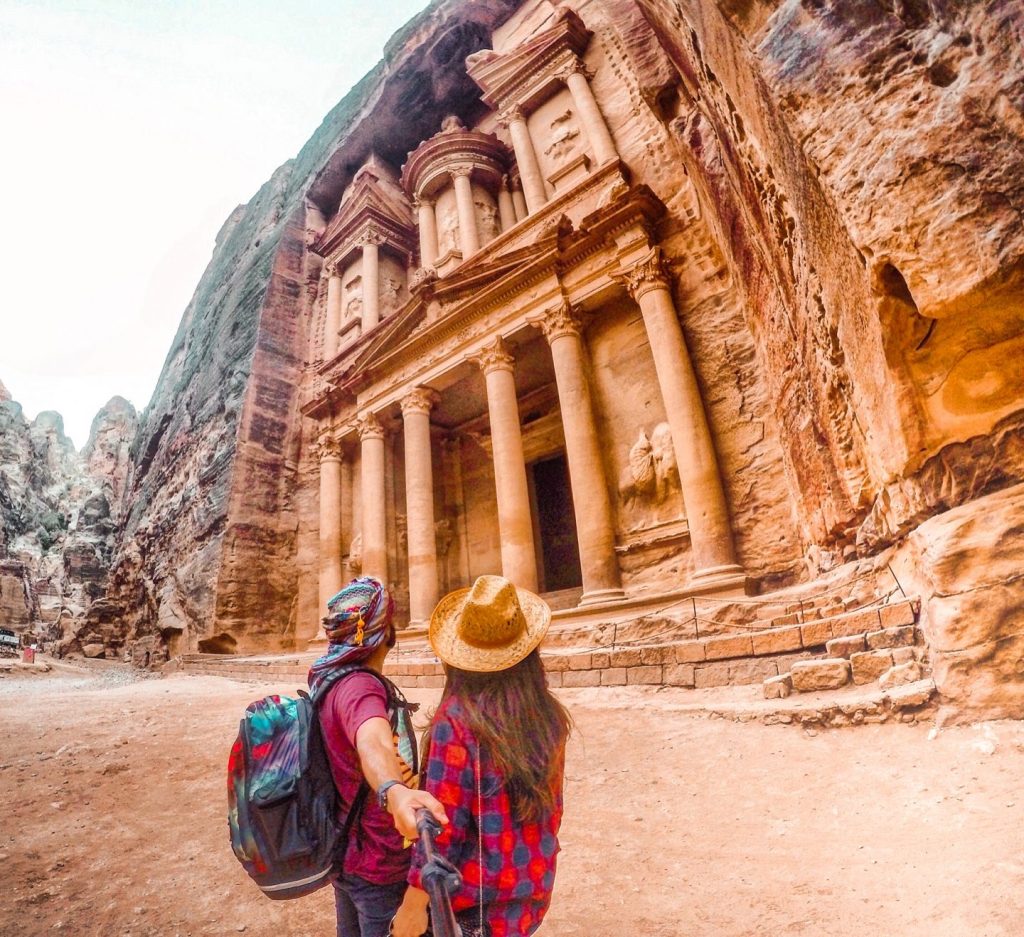
Choosing the right time to visit Petra, Jordan can make a big difference in your experience. The best seasons are spring (March to May) and autumn (September to November). During these months, the weather is warm but not overly hot, making walking and hiking more enjoyable.
Summers (June to August) can be extremely hot, with daytime temperatures soaring above 40°C (104°F), which makes exploring uncomfortable and even dangerous. Winter months (December to February) are cooler and quieter, but nighttime temperatures can drop significantly, and occasional rain can make paths slippery.
Petra opens around 6:00 AM and closes at sunset, so plan to arrive early to avoid crowds and harsh sun. For a unique experience, attend Petra by Night—a candle-lit tour available on Monday, Wednesday, and Thursday evenings, where traditional Bedouin music echoes through the Siq, culminating in a serene view of the Treasury by candlelight.
Practical Tips for Visiting Petra
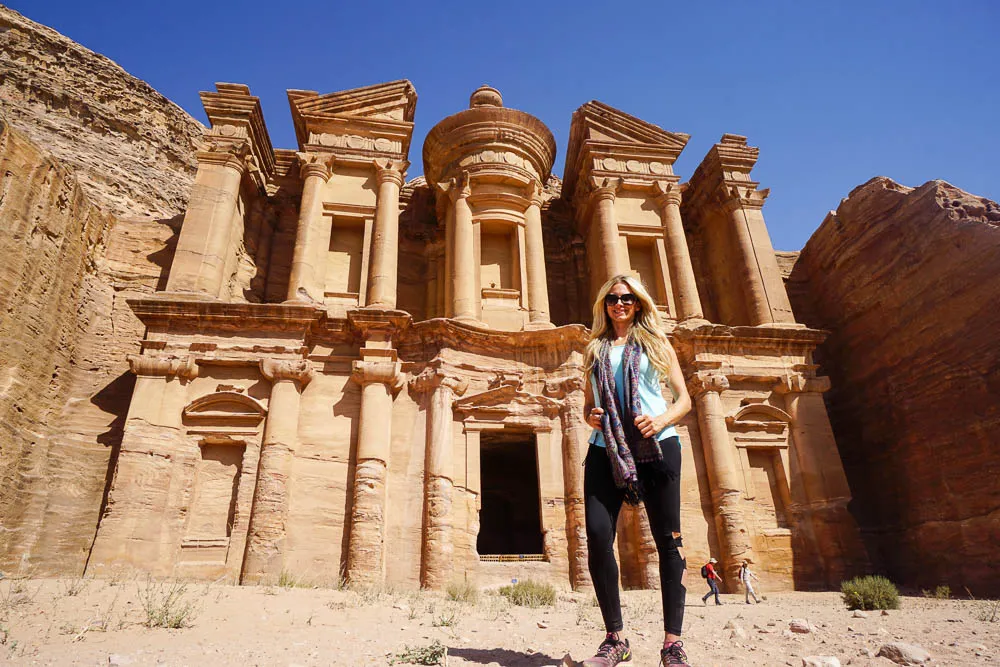
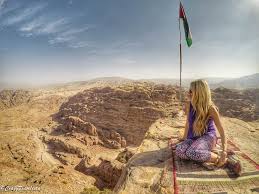
To get the most out of your Petra adventure, it’s essential to prepare well. Here are some tried-and-tested travel tips:
- Buy a Jordan Pass: If you’re visiting Jordan, the Jordan Pass covers your entry to Petra (and over 40 other sites) and waives your tourist visa fee. It’s a cost-effective option.
- Stay at least one night in Wadi Musa: The nearby town has a range of accommodations from budget hostels to luxury hotels, giving you time to explore more than just the main trail.
- Wear comfortable shoes: Petra requires hours of walking, often on rocky, uneven terrain. Hiking or trail shoes are a must.
- Bring water and snacks: There are small cafes inside Petra, but it’s wise to bring your own refillable bottle and energy bars, especially if you plan to hike to the Monastery or beyond.
- Respect local culture: Jordan is a conservative country. Dress modestly (especially women) and always be respectful when interacting with locals.
- Avoid camel or donkey rides: While they may seem fun, animal welfare concerns are significant. Choose ethical tourism practices when visiting.
- Hire a guide if you love history: A certified local guide can give you deeper insight into Petra’s history and hidden sites that you might otherwise overlook.
Conclusion: Why Petra Should Be on Your Travel Bucket List
Petra, Jordan, is more than a tourist attraction—it’s an emotional, historical, and spiritual journey into one of the ancient world’s greatest civilizations. From the moment you step into the Siq to your last glance at the towering Monastery, Petra inspires awe, reflection, and respect for the brilliance of those who came before us.
Whether you come for its history, adventure, or sheer beauty, Petra promises an unforgettable experience. It’s no surprise this timeless city remains one of the most visited and celebrated wonders of the world. Add it to your travel list—you’ll never forget the day you walked through a rose-red city half as old as time.

